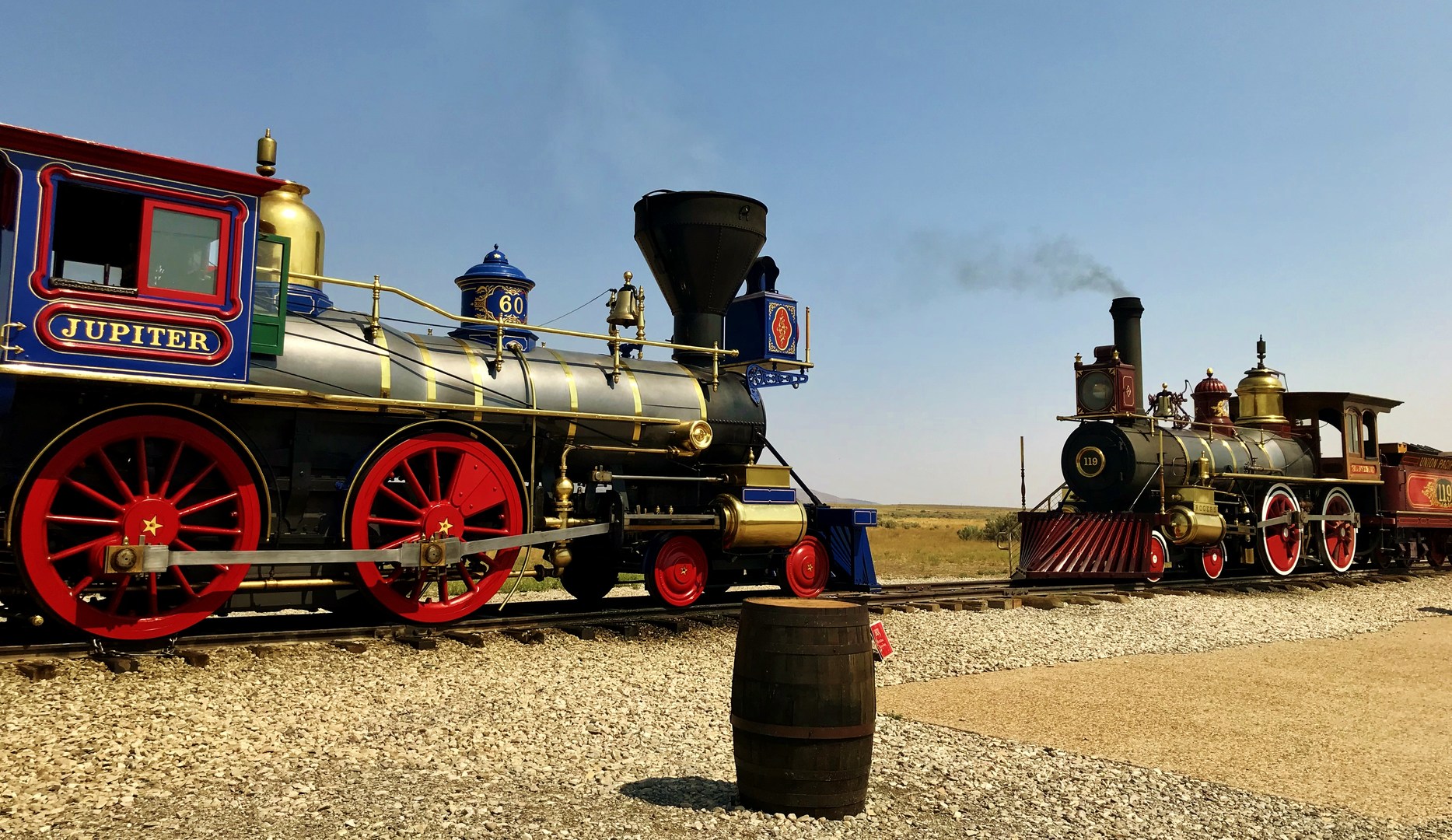You are here
Promontory Summit is a historical site located approximately 75 miles north of Salt Lake City. Here, on May 10th, 1869, in the remote desert north of the Promontory Mountains, the Pacific finally touched the Atlantic. It was 7 years after construction of the first transcontinental railroad was begun, initiated under President Lincoln's authorization, that the final tie was secured at Promontory Summit with the ceremonial golden (and silver) spikes. The final tie would join the competing work of the Central Pacific and Union Pacific companies in their march east and westward, respectively. Two locomotives, each carrying dignitaries from their respective companies, met face to face at this point for the completion ceremony. Only a few short years after America's bloody Civil War, a divided nation was brought together at this historic site, fulfilling Lincoln's mandate and catalyzing the changes to come for the American West.
A cross-country journey to California prior to 1869 was a 6-month endeavor by wagon or steam boat (for those who afford it) around the South American Cape Horn. For most, the journey by wagon was slow and arduous; it crossing plains, deserts, and finally the daunting Sierra Nevada. With the completion of the railroad, travelers and goods could make the trip in a record-breaking 2 weeks. Moreover, many manufactured goods in the West had to be shipped from the East Coast. Ironically, this included the rails, locomotives, and other supplies the Central Pacific needed for the construction of the transcontinental route. Once this vital supply line was open, the Central Pacific, along with other West Coast industries, was able to expand. Conversely, ores mined in the West could be shipped to the industrial Northeast. Vital communication between the East and West were also established with the erection of telegraph lines along the route concurrent with rail construction. The venture of a transcontinental railroad was so successful that within several years of its completion, more routes would be constructed by various railroad companies.
Change was coming to the American West, and the connection of a continent-spanning rail line was the inflection point of that change, but not without consequence. While the railroad accelerated the growth and prosperity of the nation, it also spelled the end of the old American West. It hastened the near extermination of the American Bison, displaced more Native people from their territories, and gave rise to new cities out of former wilderness. It was the end of the frontier and the opening to a new world.
Logistics:
Golden Spike National Historical Site is located less than 30 miles west of I-15, exit 365 north of Brigham City, UT. The Nation Parks Service site supports a visitors center (open 9-5) and several multi-use trails; admission is $20 or free for NPS Annual Pass holders.
Operating replicas of the 2 train engines present at the golden spike ceremony are brought out to the site daily, accompanied by a ranger talk. Currently, they are brought out at 10:00 & 10:30 AM and driven back at 4:00 & 4:30 PM (check the park's daily schedule online to confirm).
The nearby East Grade Auto Tour (unpaved) and Big Fill Loop Trail (1.5 miles) take visitors along the original grades through the final mountain cuts and fills of construction. The West Grade Auto Tour begins 7 miles west from the visitor's center. The West Grade Tour also connects to the 90 mile BLM Transcontinental Railroad Backcountry Byway. The backcountry trail may be a great option for multi-day bike-packing as overnight parking is along the access road west of the visitor's center for $5.
Overall, my recommendation is arrive at the visitor's center 1-2 hours before the trains depart. After the visitor center closes, head on the East Auto Tour and Big Fill trail for a scenic overlook of the Great Salt Lake. Finally, head to the nearby Spiral Jetty (30 minutes from the visitors center) to watch the sun set over the lake. Unfortunately, my visit was on hazy day, so be sure to check regional air quality to ensure the best views of the lake. Visit your local library beforehand or catch the 20 minute movie at the visitors center to learn more about the first transcontinental railroad.
"May God continue the unity of our country as this railroad unites the two great oceans of the world"
-Inscription craved on the Golden Spike
Logistics + Planning
Current Weather: Powered by Dark Sky






























Comments
Sign In and share them.